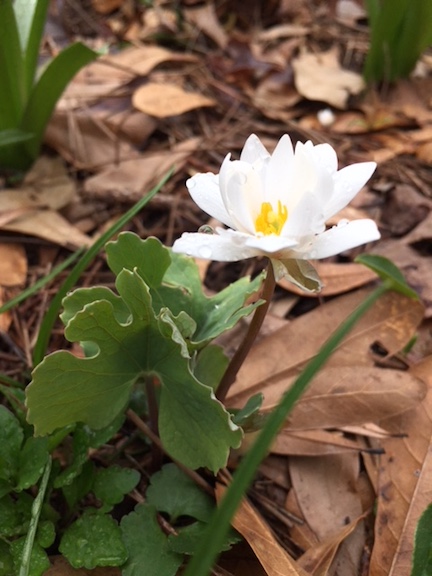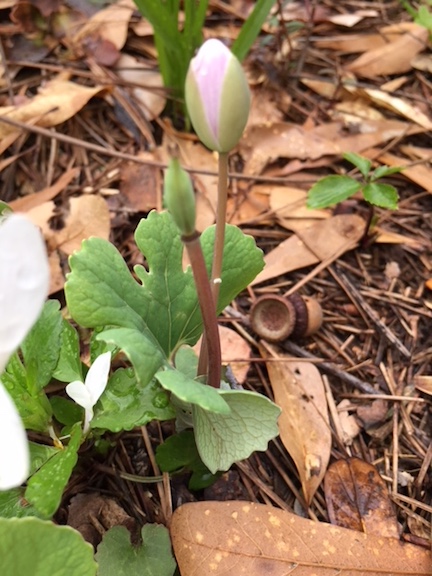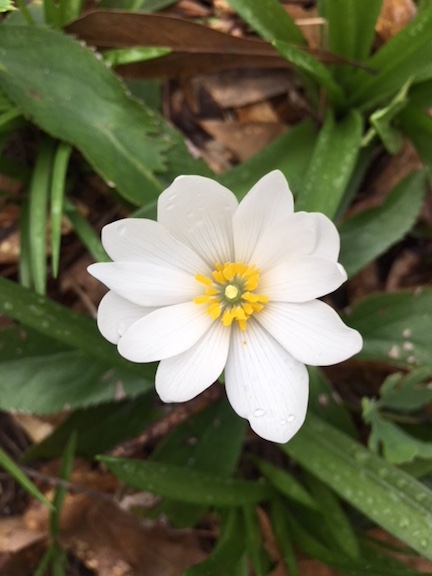I was away last week, spending spring break with my children and their children and when I returned home, spring had broken out all over my garden. Although I am happy to see so many of my early spring favorites popping into bloom, it is the bloodroot with it’s stark white petals and golden centers that I find the most thrilling.

In a way, I feel like I’m cheating to enjoy seeing the bloodroot right outside the door. I should have had to hike up and down the mountainsides, crawling on my knees to see this, the first of the wild spring treasures to appear. Instead, I can easily see it from the comfort of my kitchen chair.
Undoubtedly, the American Indians who lived in our region appreciated bloodroot for its beauty, but it was also an important part of their medicine – and war! chests. Break open the root and stem of this wildflower and you’ll immediately see how it got its name as blood red sap begins to drip on your fingers. Cherokees and other tribes mixed this sap with either black walnut oil or bear grease and used it as war paint and to dye baskets and blankets.

Algonquin and Iroquois Indians made bloodroot into teas and tinctures to treat a variety of ailments, including colds and congestion, rheumatism and fevers. The potential of this folk medicine created interest in western medicine and the plant was tested and found to contain useful medicinal elements. Although extracts from bloodroot were at one time included in some toothpastes and mouthwashes, this practice was discontinued when dangerous side effects developed.
Like many medicines, bloodroot is potentially toxic and dangerous. So, how did the American Indians apparently use it safely? While western medicine focused on identifying individual bioactive compounds, traditional medicine included the entire plant, resulting in a mixture of chemicals that may be more effective and less harmful than isolated elements.

Much research is yet needed to determine the safety and effectiveness of the plant as medicine. In the meantime, just rejoice in its beauty and sing Hallelujah that spring is around the corner.

Hi Laura,
I am wondering if we might try growing bloodroot outside Love Hall. What type of growing conditions does it need?
Hi Laura,
I am wondering if we can grow bloodroot outside Love Hall. What type of growing conditions does it need?